Didymella raspberry and her treatment

Didymella is a common health problem for raspberries. It quickly makes the vegetation weak, which later leads to its death. Only timely treatment will get rid of didimella and cure the plants.

Description and signs of the disease
With an ailment such as purple spot, or didimella, caused by pathogenic marsupial fungi, stems and leaves are affected. On the stems at their very base, small spots of lilac color appear. Over time, this mottling begins to spread upward, covering the entire plant. In places where fungal spores breed, shoots will begin to crack, reducing the nutrition of raspberries. Areas on branches that have been affected by this disease will become brittle.
On the shoots of last year, the wood will gradually dry out, which will lead to their early death. Kidneys damaged by the disease will not open, sometimes they form diseased processes. After the shoots, the disease gradually passes to the leaf blades.
In this case, the surface of the leaves takes on a brown color with small blotches. Later, large brown spots with a bright yellow border are formed.
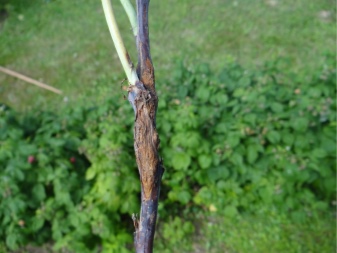

Causes
The causative agent of purple spot is a fungus. It can get caught in small cracks in plants and cause an infection. The following factors contribute to the appearance and spread of harmful fungi:
- excessive moisture level;
- thickening of landings;
- the formation of small growths on the shoots;
- too close placement of groundwater;
- too high content of nitrogen elements in the soil.
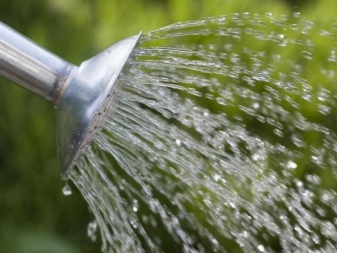
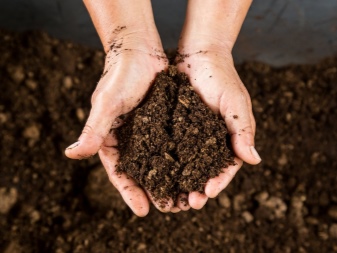
Which varieties are resistant?
There are varieties of raspberries that can boast of being particularly resistant to this ailment. Here is some of them.
- "Kirzhach"... This variety belongs to the mid-season species. It is also particularly resistant to winter thaws. "Kirzhach" is distinguished by rather dense fruits, a relatively high level of productivity.
- "Modest"... This raspberry variety is also a medium-ripening variety. The shrubs are medium-sized. All berries are small in size, they have a conical shape, the fruits have a high density.
- "Meteor". This early ripening variety has bright red berries that fully ripen in mid-summer. The fruits can be stored for a long time after being harvested. This raspberry has a pleasant aroma and sweet and sour taste.
- "Balm". This species is resistant to various diseases and pests. The berries are distinguished by a dense, but juicy pulp.
With proper care, it will be possible to harvest a large crop annually.
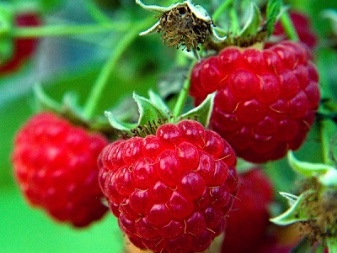
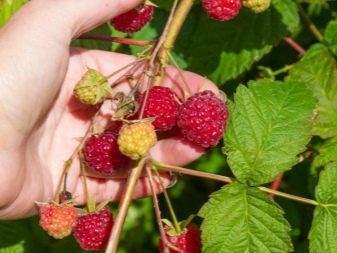
Ways to fight
There are many different ways to combat this disease on raspberries. Let's consider some of the methods in more detail.
- Sanitary treatment. Regularly it is necessary to trim the old and affected parts of the stem shoots. At the same time, it is recommended to immediately burn all the removed parts so that in the future they do not become the main source of the spread of fungal infections.
- Urea... A solution of urea can help in the early stages of raspberry infestation. In this case, the concentration should be 6-7%. The resulting composition is sprayed on plants. At the same time, the shrubs need to be processed before the buds open, another treatment is carried out before the buds open.
- Bordeaux liquid. This remedy will allow you to treat many other diseases on raspberries.For spraying, use a 1% solution. Processing is carried out three times per season: in early spring, at the time of the formation of flower buds, after harvesting the fruits.
- Garlic tincture... Such a folk remedy can only help in the early stages of the development of the disease. To prepare such a medicinal composition for raspberries, mix 0.5 kilograms of chopped garlic heads and 3 liters of water. All this must be insisted for an hour, after which the composition is decanted. The liquid will need to be diluted with three more liters of water, all this is again insisted for about an hour. After that, immediately before use, add another 4 liters of liquid and spray.
- There are many other useful tinctures that can be made quickly at home. So, gardeners often make compositions with parsley, calendula, lavender and dill. They will also scare off various pests.
- Copper fungicides. Such ready-made chemicals should be used in strict accordance with the directions in the instructions. The most popular means among gardeners are fungicides "Skor", "Topaz", "Hom". As a rule, treatment with such substances is carried out after harvesting the fruits. It is better to repeat spraying next year. There are also special biological fungicides (Fitosporin-M, Fitop-Flora-S). They will allow not only to destroy didimella on raspberries, but will also provide a preventive effect.
When treating a culture for didimella, it is best to take an integrated approach. You can combine regular treatments with special preparations with spraying with folk tinctures. Various medicinal solutions are often used not only for spraying, but also for irrigation.
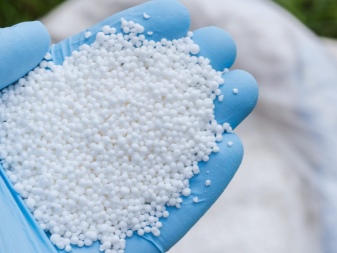
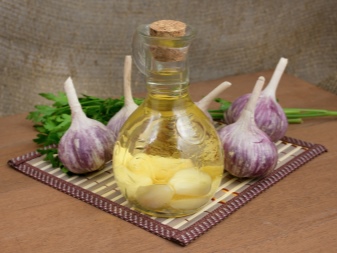
Prevention measures
There are some important preventative measures to keep in mind to avoid purple spotting on raspberries.
- Correct fit. To exclude the appearance of such a disease on the crop, it is necessary to pay special attention to the seedlings. Only healthy and strong plants should be planted in open ground. There should be no cracks or other damage on their surface. The best option would be zoned types of raspberries, since they already have sufficient resistance to this ailment. The soil for planting should be neutral. Avoid planting near groundwater. It is best to plant such a culture next to spicy herbs, as well as flowers that have pungent odors (calendula, marigolds). These plants easily scare away insects - carriers of fungal infections, and also enrich the surrounding air with useful elements.
- Cropping and thinning... Shrub pruning is carried out most often in the fall. It is recommended to carry out the procedure in dry weather. Such processing involves the removal of all old, weak and diseased parts of the vegetation. When thinning raspberry bushes, all dense thickets are removed, which are the optimal place for the spread of harmful fungi. It is important that there is air circulation between the plants.
- Mulching... This procedure is carried out both between individual shrubs and between individual rows. Mulching prevents the appearance of weeds, which are one of the carriers of fungi. And it also allows you to keep the soil loose so that it can let air through.
- Loosening... The procedure is carried out in the near-barrel area. It needs to be done every fall. Loosening can significantly reduce the risk of didimella. The loosening depth should not exceed 7-8 centimeters. Otherwise, the root system of the shrubs can be severely affected.
- Watering... In dry and warm weather, it is recommended to additionally moisturize the raspberry bushes. You can mix water with nutritious wood ash. Such a composition will contribute to the enrichment of potassium, which is necessary for maintaining healthy vegetation.
- The use of a trellis. It is recommended to tie up raspberry bushes on a trellis. This allows for good ventilation, as well as avoiding thickening of the plantings.
- Top dressing. The lack of various nutrients can lead to a significant weakening of the immune system of raspberries, as a result of which the vegetation becomes susceptible to a variety of diseases.
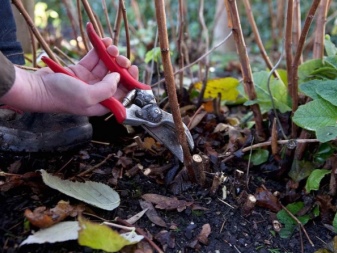














The comment was sent successfully.